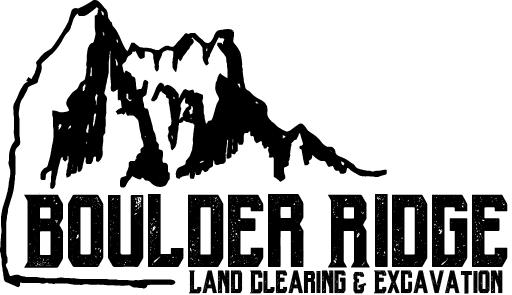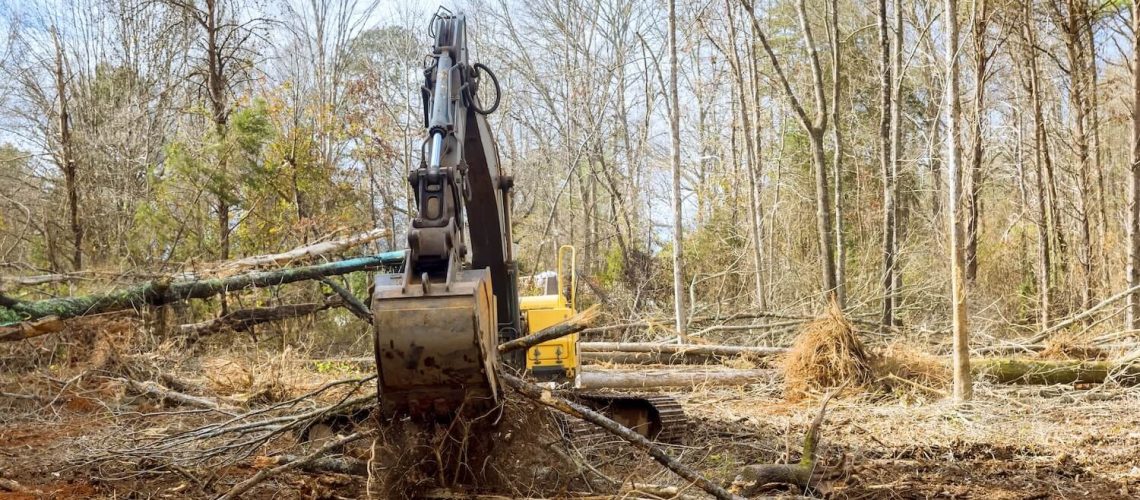When it comes to preparing land for a new project—whether it’s for a home, farm, or commercial development—land clearing is often the first major task on the agenda. With the abundance of DIY tutorials available online and the potential cost savings, many property owners might be tempted to tackle land clearing themselves. However, despite the allure of handling the project solo, the reality is that DIY land clearing can cost you far more in the long run.
In this article, we’ll explore the reasons why DIY land clearing can lead to hidden expenses, increased risks, and lost time—ultimately making professional services a smarter, more economical choice.
1. The Hidden Costs of Renting Equipment
A common misconception is that renting the necessary equipment for land clearing is a cost-effective alternative to hiring professionals. However, the reality is that heavy machinery such as bulldozers, excavators, chainsaws, and stump grinders come with high rental fees. Beyond the base costs, there are several additional factors that can drive up expenses:
- Training and learning curve: If you’re not experienced in operating heavy machinery, there is a significant learning curve. Misusing equipment not only delays progress but can also lead to expensive repairs or injuries.
- Fuel and transport: Heavy machinery consumes large amounts of fuel, which adds up quickly. Additionally, transporting equipment to and from your site is another cost that many DIYers overlook.
- Insurance and liability: Operating machinery without the proper insurance can leave you responsible for any damage to your property, neighboring properties, or the equipment itself. Professional land clearing companies carry their own insurance to mitigate these risks.
Example Scenario:
Imagine renting a bulldozer for a few days at around $500 per day. You may also need stump grinders and chainsaws, adding another few hundred dollars daily. Over a week, equipment rental alone could cost you upwards of $5,000. This does not account for fuel, potential damage, or the time spent learning how to use the machines effectively.
2. Safety Risks and Potential Injuries
Land clearing is a labor-intensive and hazardous task, involving large trees, heavy branches, and uneven terrain. Professional land clearing services come with trained and licensed experts who understand how to work safely and effectively in such environments.
For DIYers, the risks are magnified:
- Falling trees and branches: Trees, especially dead or diseased ones, can fall unpredictably. Improper cutting techniques increase the chances of injury or damage to nearby structures.
- Machinery accidents: Heavy machinery, if operated without proper training, can cause severe accidents. Misjudging the operation of an excavator or bulldozer could lead to overturned vehicles, personal injuries, or costly property damage.
- Hidden hazards: Underground utilities like water pipes, gas lines, or electrical cables can easily be damaged during land clearing. Repairing these utilities can be incredibly expensive and may even result in fines or legal action.
Injury-related costs from DIY land clearing can be devastating. Medical bills, lost wages, and long-term recovery could add a hefty price tag to a job that seemed like an opportunity for savings.
Example Scenario:
A homeowner attempting to remove a large tree on their own miscalculates the direction of the fall, causing the tree to crash into a neighboring fence. Now, they face not only property repair costs but also medical bills after being injured in the process. The total expenses could easily exceed the cost of hiring a professional in the first place.
3. Environmental Regulations and Permits
Many areas have strict environmental regulations when it comes to land clearing. These rules exist to protect ecosystems, wildlife habitats, and prevent soil erosion. Often, permits are required before land clearing can begin, and without the proper knowledge, DIYers might unknowingly violate these regulations.
Professional land clearing companies are familiar with local laws and can navigate the permitting process for you, ensuring the project is compliant with environmental standards. Fines for non-compliance can be steep and may result in delays or additional mitigation costs.
Example Scenario:
In some regions, clearing more than a certain percentage of trees from a property without a permit can result in fines of $10,000 or more. Additionally, the cost of replanting vegetation or implementing erosion control measures after the fact can escalate quickly. Professionals can ensure you avoid these costly mistakes.
4. Land Grading and Soil Erosion Control
One of the most critical aspects of land clearing is ensuring that the cleared land is properly graded to prevent soil erosion and flooding. DIY land clearing often overlooks these essential factors, leading to long-term problems for your property.
Professional land clearing services not only remove trees, brush, and debris but also provide proper land grading. This ensures water drains correctly and that the land is prepared for its intended use—whether it’s for construction, agriculture, or landscaping.
Without the proper grading, your property could be at risk of:
- Soil erosion: Improperly cleared land can lead to significant erosion, especially after heavy rain. Erosion can damage the foundation of future structures, cause landslides, or wash away valuable topsoil.
- Flooding: Inadequate drainage can cause flooding, potentially leading to damage to your property or neighboring properties.
Correcting drainage or erosion issues after the fact can be incredibly expensive, potentially costing thousands of dollars in regrading and land restoration.
Example Scenario:
A property owner clears a large section of land on a hillside without considering erosion control measures. After the first heavy rain, significant soil erosion damages the site, requiring an additional $8,000 in land restoration and erosion control work. A professional land clearing company would have planned for this and implemented erosion control from the outset, avoiding the extra costs.
5. Lost Time and Productivity
While DIY land clearing might seem like a weekend project, the reality is that it can take much longer—especially for those without experience. Professionals can clear an acre of land in a fraction of the time it would take a DIYer, thanks to their expertise, experience, and specialized equipment.
Time delays have their own hidden costs:
- Project delays: If land clearing takes longer than expected, it can delay the start of other aspects of your project, such as construction, landscaping, or farming.
- Lost revenue: If the land you’re clearing is intended for commercial use, any delay could mean lost income. For example, farmers who are late in preparing their fields might miss the growing season, while developers might delay a building project.
In addition to the direct cost of lost productivity, there’s also the value of your own time to consider. Land clearing is an intensive, laborious task that will take you away from other responsibilities or income-generating activities.
Example Scenario:
A DIYer spends three weeks attempting to clear an acre of land but makes slow progress due to equipment malfunctions and lack of expertise. A professional crew could have completed the same task in three days, saving time and preventing delays to the overall project.
6. Expertise in Stump Removal and Land Debris Disposal
Stump removal is one of the most challenging aspects of land clearing. Improperly removing stumps can leave roots behind that continue to grow, potentially damaging nearby structures or utilities. Additionally, large amounts of land debris, such as tree limbs, roots, and vegetation, need to be properly disposed of after clearing.
Professionals have specialized equipment for stump grinding and removal, ensuring that the job is done thoroughly and effectively. They also have the necessary connections for proper debris disposal or recycling, which can save you from the costs of hiring additional services or renting dumpsters.
Improper disposal of land debris can also lead to environmental penalties if hazardous materials are not handled correctly.
Example Scenario:
After clearing land, a DIYer is left with piles of stumps, roots, and debris and has no efficient way to remove them. Renting dumpsters or hauling the debris away could cost upwards of $1,500. In contrast, a professional service would have included debris removal as part of their package, saving both time and money.
7. Long-Term Property Value Impact
Land clearing done by professionals not only prepares the site for immediate use but also enhances the long-term value of your property. Proper grading, erosion control, and debris removal are essential for ensuring that the land remains usable and attractive to potential buyers or investors.
DIY land clearing, on the other hand, can result in long-term damage that lowers property value. Poorly cleared land, erosion issues, and leftover debris can all make the property less appealing, reducing its resale or investment potential.
Example Scenario:
A developer clears a piece of land for future home construction but cuts corners, leaving stumps and erosion issues unresolved. When it comes time to sell the property, buyers are put off by the necessary repairs and restoration, leading to a lower sale price. A professional clearing job would have preserved the property’s value and appeal.
Conclusion: The True Cost of DIY Land Clearing
While the upfront cost of DIY land clearing may seem lower, the hidden expenses and risks associated with the process often outweigh the perceived savings. From equipment rental fees, safety risks, and environmental penalties to long-term property damage and lost time, the potential for cost overruns is high.
Hiring professional land clearing services ensures that the job is done safely, efficiently, and in compliance with local regulations. Not only does this save you money in the long run, but it also provides peace of mind, knowing that your land is prepared correctly for future use.
By investing in professional expertise, you’re not just clearing land—you’re making a smart financial decision that protects your property, your project, and your long-term goals.

